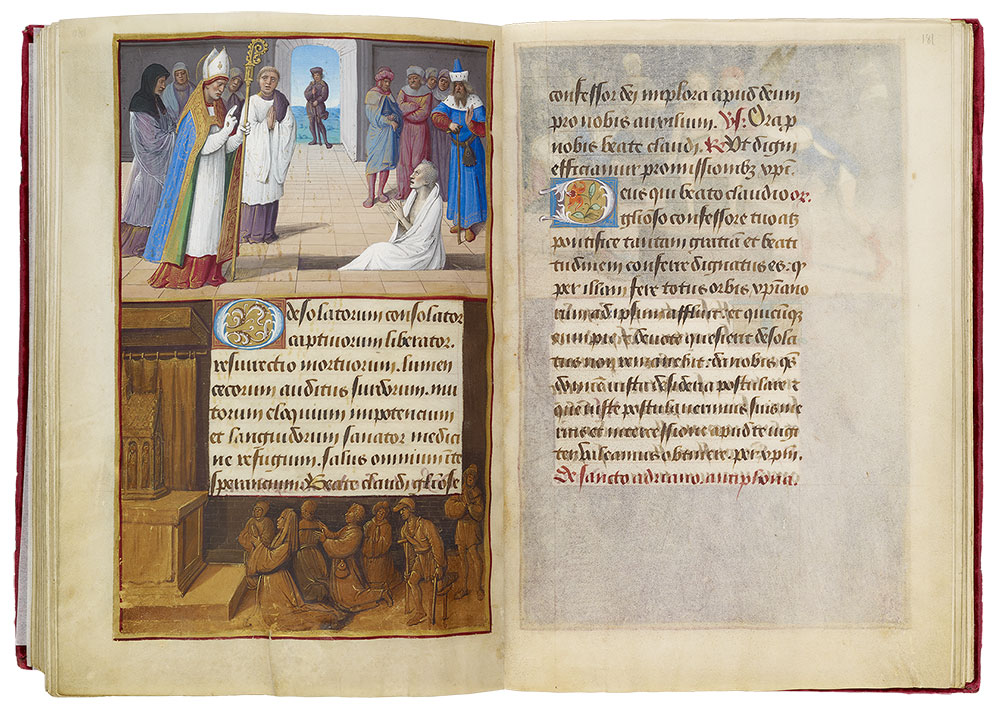
St. Claude of Besançon: Claude Resuscitating a Dead Man
Hours of Henry VIII
Illuminated by Jean Poyer
Gift of the Heineman Foundation, 1977
St. Claude of Besançon: Claude Resuscitating a Dead Man
Border: Pilgrims Kneeling Before Claude's Shrine (fol. 180v)
Claude, as in the miniature, is usually depicted as a bishop with miter and crosier. Here, as a result of his blessing, a dead man sits up in his grave, newly restored to life. (Legends often mention a dead child.)
Born at Salins in 607, Claude of Besançon was said to be from a Roman senatorial family. At the age of twenty he gave up a military career to become canon of Besançon; later he became a monk at the monastery of St. Oyend in the Jura Mountains, where he was subsequently elected abbot. As abbot, Claude applied the rule of St. Benedict and restored the monastery's buildings. In 685 he was chosen bishop of Besançon but retired eight years later to Condate, where he later died and was buried (6 June 699). His burial place (later called Saint-Claude) was a popular pilgrimage site, and miraculous cures took place there, including the resuscitation of three drowned children and a dead boy.
In the margin a group of pilgrims worships before the jewel-encrusted shrine containing the saint's relics. A woman in contemporary court dress kneels in front. Claude was often prayed to by French nobility for the birth of sons. At the rear hobbles a lame man, hoping for his eventual cure. (Feast day: June 6)
